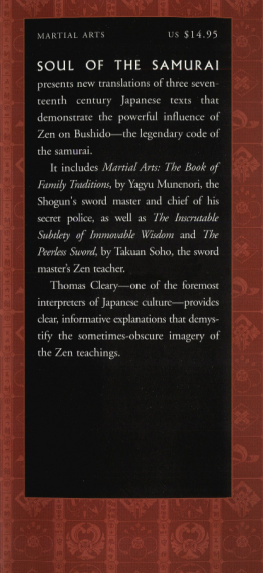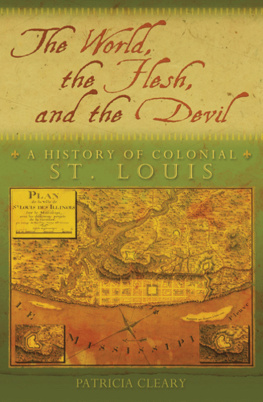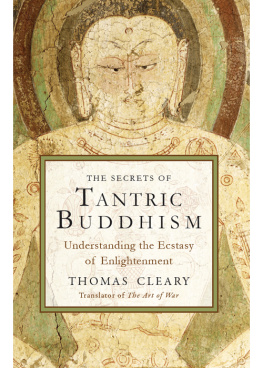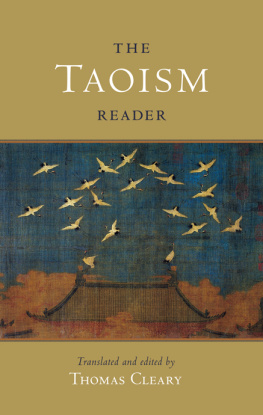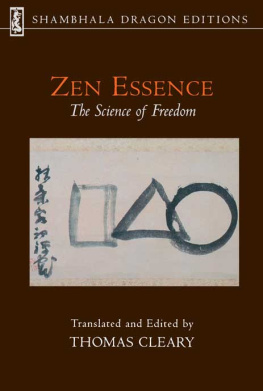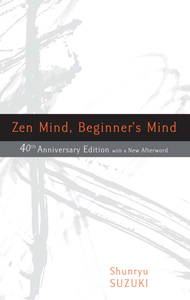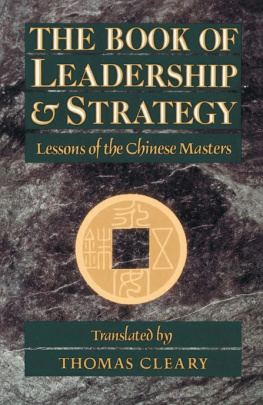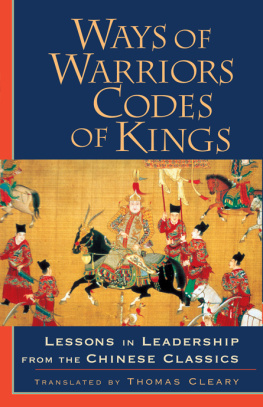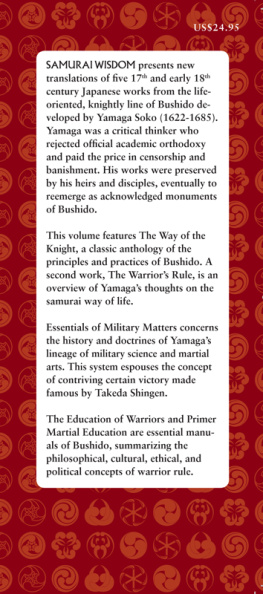ABOUT THE BOOK
This guide to enlightened conduct for people in positions of authority is based on the teachings of several great Chinese Zen masters. Drawing on private records, letters, and long-lost documents of the Song dynasty (tenth to thirteenth centuries), Zen Lessons consists of short excerpts written in language that is accessible to the reader without any background in Eastern philosophy. This book serves as a guide to recognizing the qualities of a genuine Zen teacher; it also serves as a study of the character and conduct necessary for the mastery of any position of power and authoritywhether religious, social, political, or organizational.
THOMAS CLEARY holds a PhD in East Asian Languages and Civilizations from Harvard University and a JD from the University of California, Berkeley, Boalt Hall School of Law. He is the translator of over fifty volumes of Buddhist, Taoist, Confucian, and Islamic texts from Sanskrit, Chinese, Japanese, Pali, and Arabic.
Sign up to learn more about our books and receive special offers from Shambhala Publications.

Or visit us online to sign up at shambhala.com/eshambhala.
Zen Lessons
THE ART OF LEADERSHIP
TRANSLATED BY
Thomas Cleary

SHAMBHALA
Boston & London
2013
SHAMBHALA PUBLICATIONS, INC.
Horticultural Hall
300 Massachusetts Avenue
Boston, Massachusetts 02115
www.shambhala.com
1989 by Thomas Cleary
Cover art: Watercolor by Japanese artist. Photograph courtesy Peabody Essex Museum. Photograph by Mark Sexton.
All rights reserved. No part of this book may be reproduced in any form or by any means, electronic or mechanical, including photocopying, recording, or by any information storage and retrieval system, without permission in writing from the publisher.
Library of Congress Cataloging-in-Publication Data
Zen lessons: the art of leadership / translated by Thomas Cleary.
p. cm.
eISBN 978-0-8348-2582-6
ISBN 978-0-87773-446-8 (paperback original)
ISBN 978-1-57062-883-2 (Shambhala Classics)
ISBN 978-1-59030-507-2 (mass market)
1. Priests, ZenChinaQuotations. 2. LeadershipReligious aspectsZen BuddhismQuotations, maxims, etc. 3. Zen BuddhismChinaQuotations, maxims, etc. I. Cleary, Thomas F. 1949
BQ9267.Z4661 1989 88-18604
294.36dc19 CIP
CONTENTS
Z EN LESSONS is a collection of political, social, and psychological teachings of Chinese Zen (Chan) adepts of the Song dynasty, from the tenth to the thirteenth centuries.
If the Tang dynasty, from the early seventh through the ninth centuries, may be called the classical period of Chinese Zen, the Song dynasty may be called its baroque period, characterized by complexity of form and ingenious imagery with multiple meaning.
In contrast to the relatively plain and straightforward Zen literature of the Tang dynasty, Song dynasty Zen literature is convoluted and artful. This is not regarded, in Zen terms, as a development in Zen, but as a response to a more complex and pressured society and individual. The Zen adepts of Song times did not regard the reality of Zen as any different in its essence from that of classical times, but considered the function of Zen to have become complicated by the complexity of the contemporary mind and the rampant spread of artificial Zen based on imitations of a few Zen practices.
The proliferation of false Zen was stimulated by the enormous impact of real Zen on Asian civilization. After the Tang dynasty, there is hardly anywhere one can turn in Chinese culture without seeing the influence of the Zen charisma.
The ill effects of the resulting influx of insincere followers into public Zen institutions are already noted in the works of great masters of the latter Tang dynasty, and these Zen Lessons contain top-level notices of an even greater decline in quality of Zen institutions and followers in the Song dynasty, in spite of Zens unparalleled prestige in cultural terms.
There is even reason to believe that the creation of new Confucian and Taoist schools using Zen methods was especially encouraged by Zen adepts because of their awareness that the original Zen Buddhist order had become seriously enervated through the attachment of worldly feelings to its forms and personalities.
From the point of Buddhist historiography, this sort of involution is predictable: a period of true teaching is eventually obscured by imitations, and even these break down into remnants with time. The Mahparinirvnastra, or Scripture of the Great Decease, among the classical scriptures traditionally most studied by Zen adepts, outlines these phenomena very clearly.
The false ideas about Zen and Buddhism that scandals at Zen centers have both arisen from and in turn re-created in many minds within and without these centers are also predictable and have existed ever since Zen became consciously articulated. Almost the entire literature of Zen, in all of its astonishing variety of forms, deals with nothing but misconceptions about the reality of Zen, which is said to be extremely simple in essence though complex in function or manifestation. The apparent complexity of Zen teaching and function is due to the complexity of the human mentality, as Zen perforce acted in more intricate ways to unify the threads of the contemporary mind.
A synthetic re-creation of the original mental science of Buddhism, Zen played a unique role in the history of East Asia through its creation of entire schools of religion, philosophy, literature, art, music, social studies, psychology, psychiatry, and physical education.
The inner dimension of the outward history of Zen, during which it first breathed life into a new Buddhism and later revived other philosophies when that Buddhism grew aged and ill, is hardly observed by those who think in political terms, but nevertheless it is consistently emphasized by the Zen adepts themselves.
These Zen Lessons illustrate the art of combining ultimate and ordinary truths, using society and conduct as a way into Zen enlightenment, by the practice of constructive criticism and higher education. This was one of the original tools of Buddhism, but in many schools it had lost its edge through excessive formalization by the time the Zen Buddhists revived its original open flexibility.
Among these schools may be counted even the Complete Reality schools of Taoism and the Inner Design schools of Confucianism. The results of Zen methods applied to Taoist and Confucian classics, these schools had as profound an impact on Chinese culture as had the original Chan schools.
The classical period of Chinese Zen is usually said to have been the Tang dynasty, from the seventh through the ninth centuries. The first large Zen commune was established in the mid-seventh century under the fourth founding teacher of Zen, and countless people were said to have been awakened by the public talks of the sixth founding teacher who was founder of the so-called southern tradition. The fourth, fifth, and sixth founding teachers were all invited to be imperial teachers, and many of their spiritual descendants became teachers of leaders of Chinese society at all levels of organization, from local to imperial.
During the Tang period some of the most influential men and women on earth studied Zen on a par with some of the humblest and most obscure men and women on earth. Zen introduced a revolution in social practice that maintained its energy through centuries of opposition and corruption, and provided one of the only historical forums for unbiased social understanding as well as spiritual understanding. Zen also influenced painting and poetry, two of the most important of Chinese arts, traditionally used for emotional education and therefore of great social significance.
Next page


